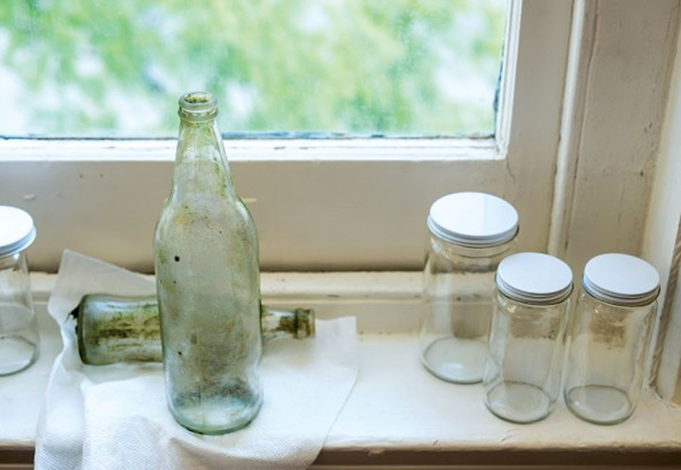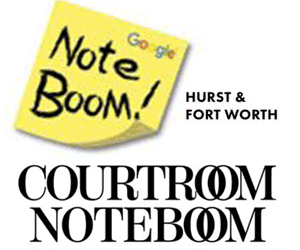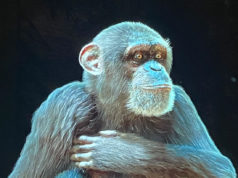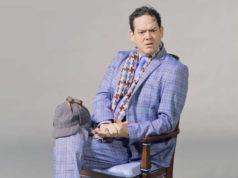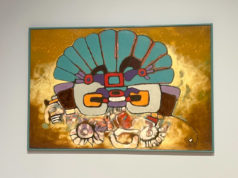Lewis and Clark. Jack Kerouac’s On the Road. And while we’re at it, Rain Man.
The road as means for a freewheeling and purposeful exploration of the landscape that is the American West, and emphatically Texas, resonates with enormous power in The Perilous Texas Adventures of Mark Dion. Up now at the Amon Carter Museum of American Art, the exhibition has a narrative spine that pays homage to the Kerouac-esque themes of the road as muse and canvas for a collage of artist-explorer revelations and expressions.
But Dion – the ultimate hyphenate as artist-naturalist-collector-of-curiosities – has more than Kerouac in mind in creating this stunningly varied show. The artist devoted two years trekking across Texas all to recreate the great sojourns of four easterners who became synonymous with Texas’ original band of artist-naturalist-explorers. They were the botanist Charles Wright, the artist-ornithologist John James Audubon, landscape architect and travel chronicler Frederick Law Olmsted, and the watercolorist Sarah Ann Lillie Hardinge.
Dion’s hybrid show – the result of a geographic rambling producing site-specific artifacts and salvaged objects – successfully merges with paintings, watercolors, photographs, and maps culled from the vast Amon Carter holdings. It adds up to one of the most refreshing re-examinations of Texas as a magnet for artists seeking inspiration from an unknown and rather forbidding Western landscape.
The exhibition, organized with great accessibility and a laser focus by Maggie Adler, the Carter’s curator of paintings, sculpture, and works on paper, steeps the viewer in some of the museum’s lesser-seen pieces that reveal the tantalizing, if occasionally traumatizing, appeal of 19th-century Texas. Various depictions of the near-mythic bison in both its most docile and ferocious forms (as seen in “Lopez Yucati and the Bison”) immediately sets the tone for the kind of unsparing Texas that its first artist-explorers encountered.
The next gallery dazzles with Texas wildlife courtesy of Audubon’s travels, where he depicted such Texan fauna as the whooping crane, cotton rat, and lynx. And thanks to the show’s savvy collaboration with the Botanical Research Institute of Texas (BRIT), early Texan plant books and even pressings, echoing the 150-year-old botanic discoveries by the revered botanist Wright, are presented in easy-viewing cases.
Before Olmsted attained vanguard status for his design of New York’s Central Park, he was a travel writer who embarked on one of Texas’ first road trips, about which he penned authoritative, if often caustic, accounts of 19th-century Texas.
One of the show’s most revelatory moments comes as Dion retraces the steps of that rare female artist-explorer. A Bostonian who flitted around mid-19th-century Texas, Hardinge created brush-bristle-fine watercolors, which serve as one of the earliest personalized takes on the Texas landscape of the 1850s (Austin to Seguin to the Guadalupe River).
Dion’s most significant contribution to the show as a contemporary artist-explorer is a seemingly inexhaustible array of objects collected during his Texas travels. He houses them in an imposing “Texas cabinet,” a multi-storied wood repository of a head-spinning series of daily objects. In turn, these artifacts conduct a time-bending dialogue with the creations wrought by the original Texas artist-explorers of more than a century ago.
Dion’s shelves are lined with everything from pottery shards, vials containing insects and gum, Dion’s fingernail clippings, Fruit Loops cereal, a tiny snake, a black widow spider snared from a Donald Judd sculpture, an iridescent green hotel shampoo bottle, oil drill heads, coyote bones, gourds, buoys, and ash trays.
With a nod toward contemporary art presentation, the Carter includes Dion’s personally designed brick-colored wallpaper to surround his Texas cabinet, and it makes a visual shout-out to some of the totems – a scorpion or armadillo – that he encountered amid the often scrub-filled Texas landscape.
This wallpaper also encircles a floor display of many of Dion’s field tools used to amass his collection. He clearly seeks to convey what it was like to have Texas serve as his laboratory and his car as his naturalist studio.
In this artist-exploration exhibition, there is a pleasing arbitrariness to what mirrors the Texan landscape. Indeed, because of the show’s refusal to be comprehensive, it embraces a bold subjectivity. Dion and the Carter avoid drawing any neat conclusions about the nature of the Texas landscape and the past and present of the artists who sought to capture it. In fact, the show’s only apparent agenda is one of demonstration: that the abundance of “curiosities” – from horse teeth to gas nozzles – yielded by Texas’ horizon-clutching topography proves unequivocally that Texas continues to be fertile ground for artistic expression. As it has always been.
The Perilous Texas Adventures of
Mark Dion
Thru May 17 at the Amon Carter Museum of American Art, 3501 Camp Bowie Blvd, FW. Free. 817-738-1933.



